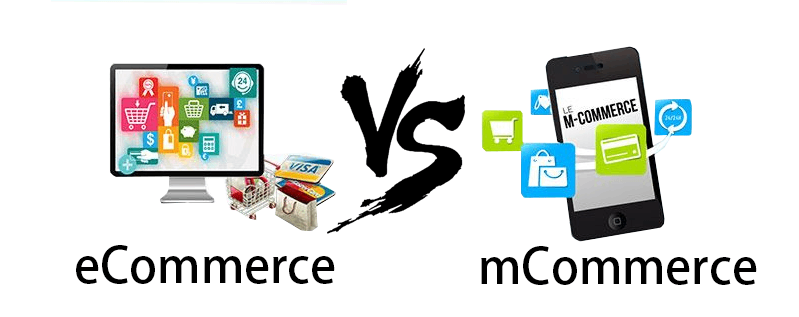MCommerce vs eCommerce: Understanding the Main Differences

eCommerce
eCommerce and mCommerce have the word ‘Commerce’ common in them and both have the similar goal of buying and selling over the Internet. They sound like similar concepts, however, are quite different from each other. Let’s identify the glaring differences between them with the help of this informative article on mCommerce vs eCommerce!
mCommerce vs eCommerce: Devices Used
eCommerce, which stands for Electronic Commerce, involves buying and selling products or services over the Internet using devices like Personal Desktop Computers and Laptops. mCommerce, on the other hand, stands for Mobile Commerce and involves the same activities done through mobile and tablet devices.
mCommerce vs eCommerce: Year Introduced
eCommerce is a far older concept than mCommerce. Where eCommerce started to evolve in the 1970’s, mCommerce came into existence in the early 1990’s.
mCommerce vs eCommerce: Portability
When it comes to portability, eCommerce devices cannot be carried everywhere and often requires users to look for a safe place to perform their transaction. mCommerce devices, on the contrary, are designed to do things quickly and on-the-fly – making it possible for users to shop from anywhere, anytime.
mCommerce vs eCommerce: Reachability
Due to the portability of mobile devices, mCommerce is able to reach a much broader audience than you could through desktop and laptop devices which are stationary.
mCommerce vs eCommerce: Security
Although this may seem surprising to you at first, mCommerce is more secure than eCommerce. But how? Where eCommerce empowers users with regular security practices like one-time password, two-factor authentication, and multi-level authentication, on the contrary, mCommerce extend the security of an online store with advanced security measures like biometric authentication.
mCommerce vs eCommerce: Optimization
Catering to a wide spectrum of mobile devices having different operating systems and screen sizes, mCommerce requires more optimization as compared to eCommerce which serves to fairly standard screen sizes of desktop and laptop devices.
mCommerce vs eCommerce: Cost
Whether it is the cost of creation or the cost of operation, mCommerce mobile app development is far expensive than what it takes to build a standard eCommerce website.
mCommerce vs eCommerce: Connectivity
Due to their non-portability, eCommerce devices can be used only at the places where the electricity and the internet are available. On the other side, mCommerce gadgets are very portable and thus connectivity options are endless. Also, to operate mobile devices, electricity is also not required all the time.
mCommerce vs eCommerce: The Use of Internet
In eCommerce, use of the Internet is mandatory to complete a transaction whereas the availability of the Internet is not compulsory in mCommerce to perform a transaction.
mCommerce vs eCommerce: A Variety of Payment Options
Where eCommerce allows shoppers to pay through traditional payment methods – like Net Banking, Credit/Debit Cards, etc, – for their shopping, mCommerce offers them a truly diverse range of emerging payment options, such as Samsung Pay, PayPal One-Touch, and Amazon Pay.
mCommerce vs eCommerce: The Degree of Personalization
Taking advantage of the latest mobile technologies like beacons and push notifications, mCommerce allows retailers to deliver a more personalized shopping experience than eCommerce websites.
mCommerce vs eCommerce: Location Tracking
Owing to the non-portability of devices, the location tracking capabilities of eCommerce has several limitations. Since mCommerce websites and apps can track and identify users’ locations with the help of technologies like GPS and Wi-Fi, they are capable of delivering shoppers location-specific content and personalized recommendations.
Contact us to get a custom quote for mCommerce or eCommerce development services.


